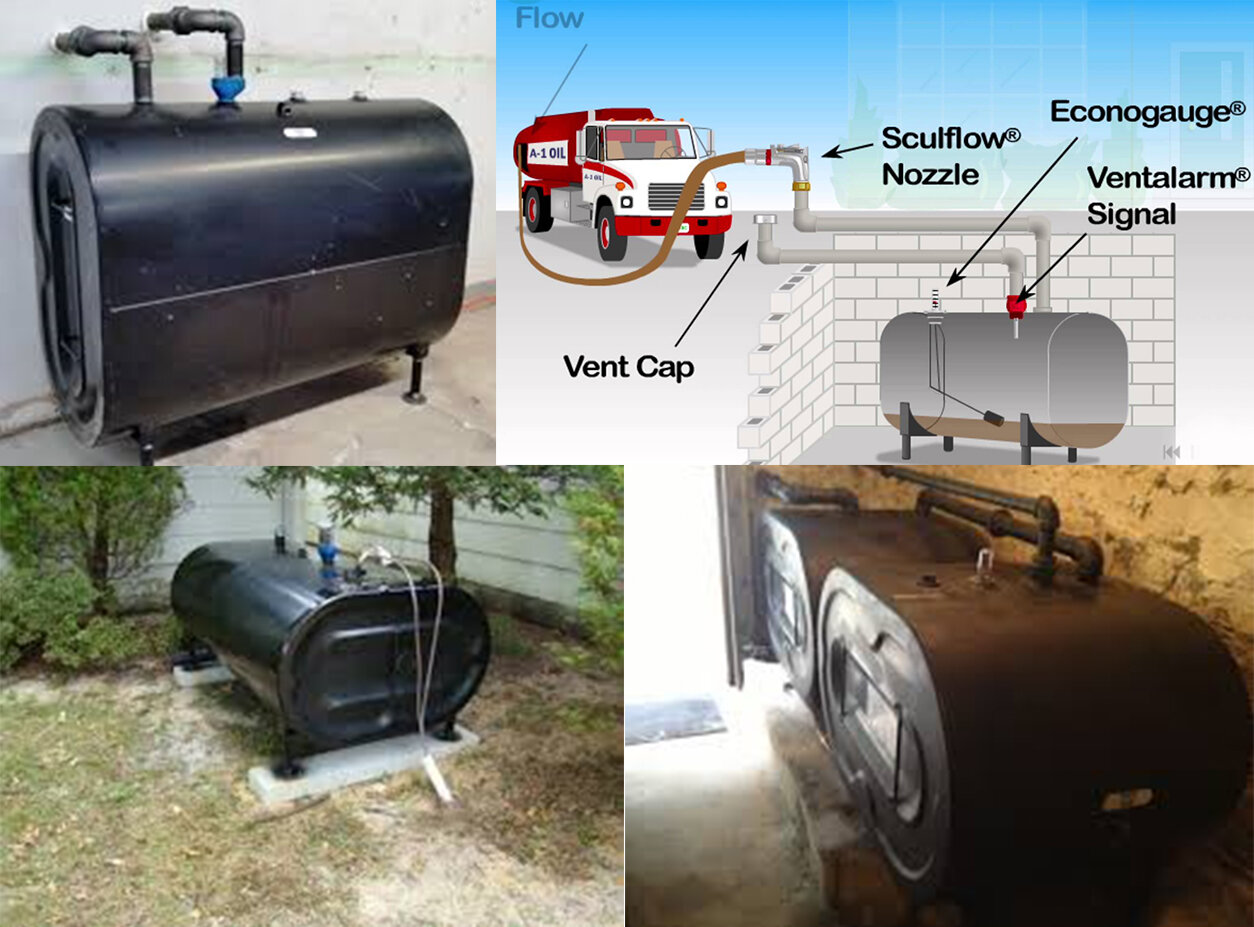There are many different configurations of indoor tanks available to fit the needs of different types of building structures; however, the most common are either steel 275 or 330 gallon tanks. These are rather thin, oval shaped tanks that provide safe and economical indoor storage. Most towns allow for tandem installations doubling capacity to either 550 or 660 gallons. Tanks are installed by our licensed heating installers in accordance to current BOCA mechanical code guidelines. All indoor tanks provided by Jasinski Fuel Service are UL listed in a minimum thickness of 12 gauge steel.
Steel Tank Dimensions
275 Gallon Vertical Tank: Height 44”, Depth 27”, Width 60” (5 feet)
330 Gallon Vertical Tank: Height 44”, Depth 27”, Width 72” (6 feet)
Vent Alarms
Every above ground oil tank should be equipped with a vent alarm system. This is a simple device installed inside your oil tank where air is vented. The vent alarm emits a audible whistle while the tank is being filled. When the oil level reaches (and covers) the bottom of the vent alarm tube; approximately 4 inches from the top of the tank, the whistle stops whistling; there by alerting the delivery man that the tank is full and to shut down. Vent alarms are also available has tank gauge combos as shown above.
Why do vent alarms malfunction?
On occasion, vent alarms may become obstructed with debris or bacteria. When this happens, the oil delivery driver will not be able to safely fill your oil tank. If this happens, we will notify you immediately so the vent alarm can be repaired or replaced. Sometimes insects can build nests in vent pipes which can lead to debris falling into the vent alarm or plugging the pipe, however the more common failure is caused by bacterial build-up in the vent alarm tube. If an oil tank is old (20 + years) it may contain significant amounts of bacterial sediment. Also, over the years water accumulates in the bottom of the tank from condensation and will cause the tank to corrode leading to tank leakage and failure. In this case, a new tank system may be recommended.
Schutz (Roth) double wall tank systems are designed where the inner portion of the tank is made of blow-molded, seamless high density polyethylene, and absolutely leak-proof, and corrosion resistant. The outer tank is made of galvanized steel with rolled seams (having no welds) with an oil and fire resistant seal that is also leak-proof and corrosion-resistant, and can contain 110% of the capacity of the inner tank for maximum protection, making it one of the safest and most reliable tanks on the market.
Wireless tank gauge
Monitor oil level from your kitchen! No more trips outside or into the basement. Installs in both basement and outside above ground tanks. No wiring needed. Maintenance free, two year warranty. 10 year life span on the battery in the Rocket and does not get sludged up since there is no float or other part that sticks into the tank. Simply put, this gauge uses an ultrasonic beam to take measurements of the oil level and wirelessly transmits the measurement to the receiver which can be located up to 150 feet from the oil tank. This gauge also reads in tenths and is by far more accurate than a mechanical gauge.
Underground Fuel Tank Replacement
The steps for tank removal are the following:
Site assessment and proposal. We will visit your home, assess the work required to excavate and remove the underground tank and prepare a free estimate.
Prior to excavation, the site will be inspected for any potential underground obstruction such as underground electrical service, septic service, telephone lines, etc. CBYD will also be notified.
Jasinski Fuel Service will provide drainage of any remaining oil product in the tank and the sludge will be properly disposed of. A back hoe will excavate the area over the tank and remove the tank from the ground. Oil lines will be sealed. Soil samples from the site will be taken and sent to a lab for Total Petroleum Hydrocarbon(TPH) testing. Any site inspections needed at this time will be made and any approvals required for this process will be expedited. The old tank will be transported back to Jasinski Fuel Service’s location where it will be cleaned and cut into small pieces for proper disposal. The tank site will be back-filled with clean gravel and top soil will be graded, raked and seeded.












